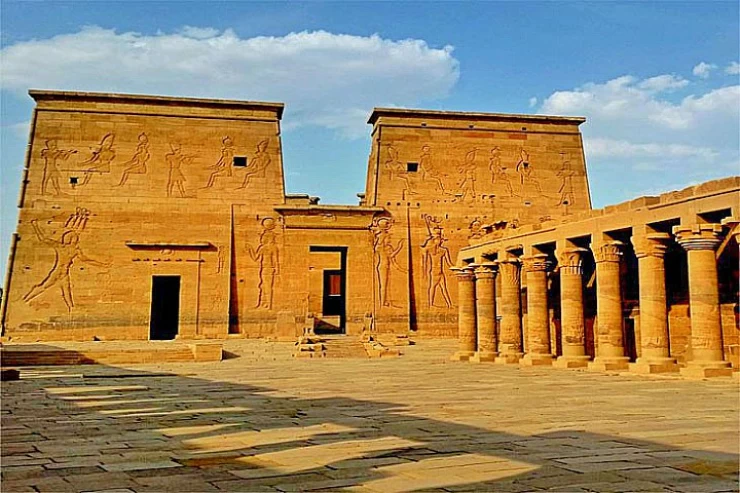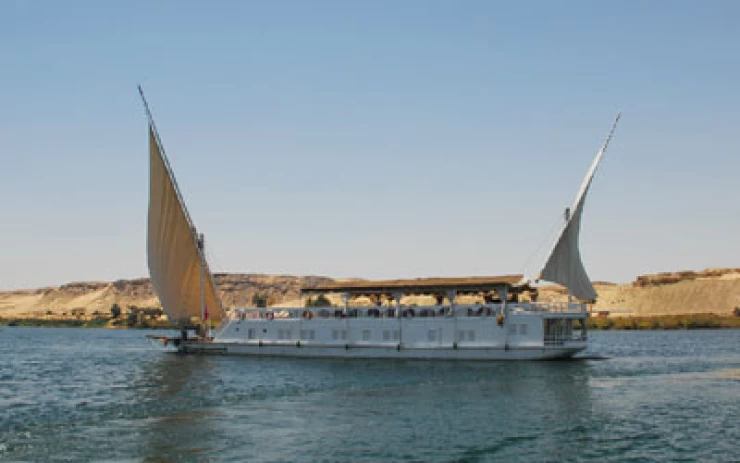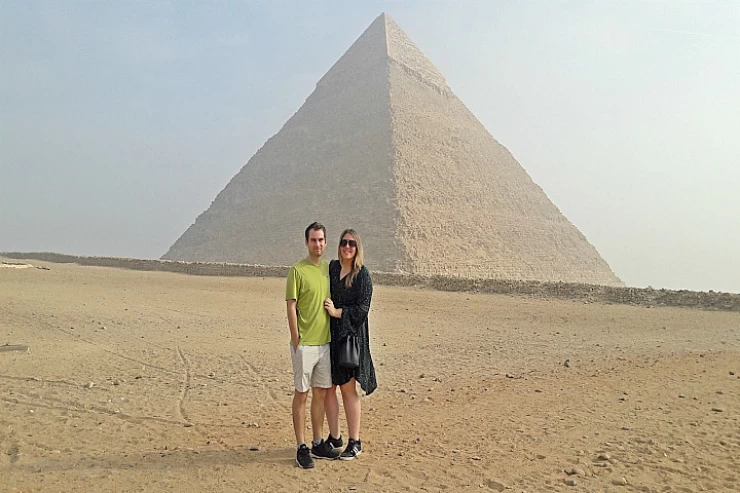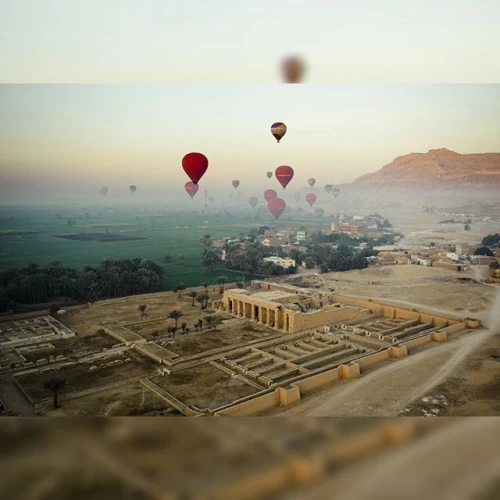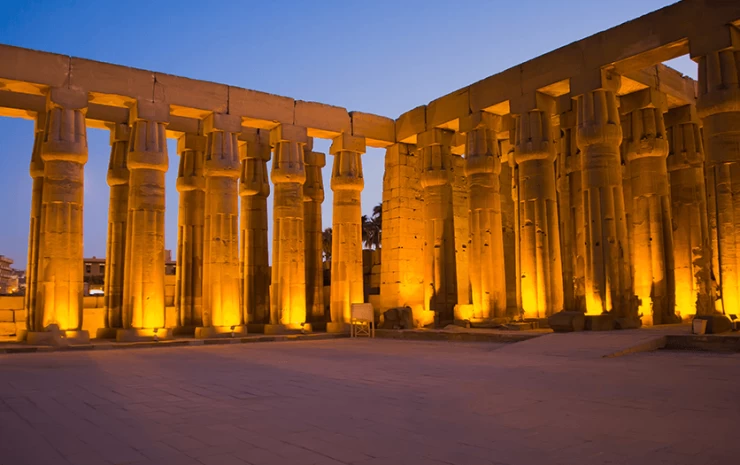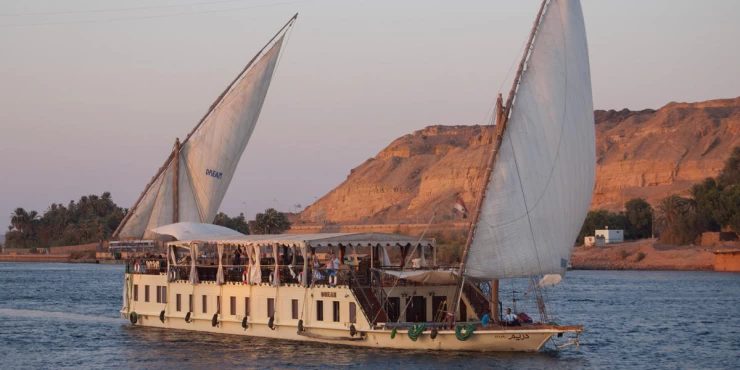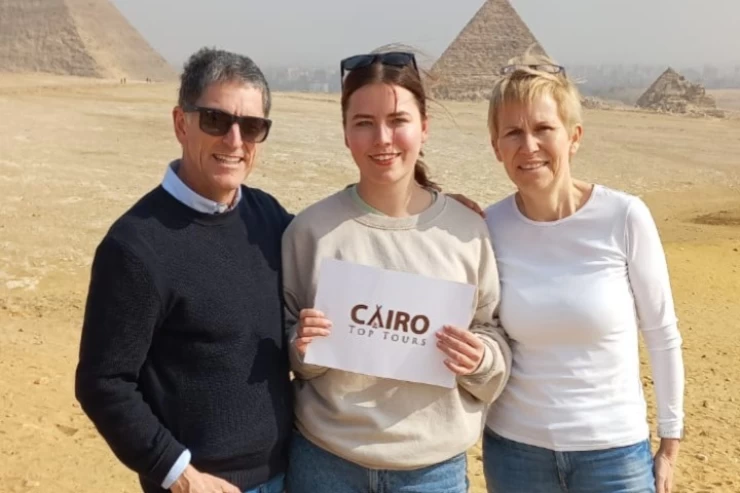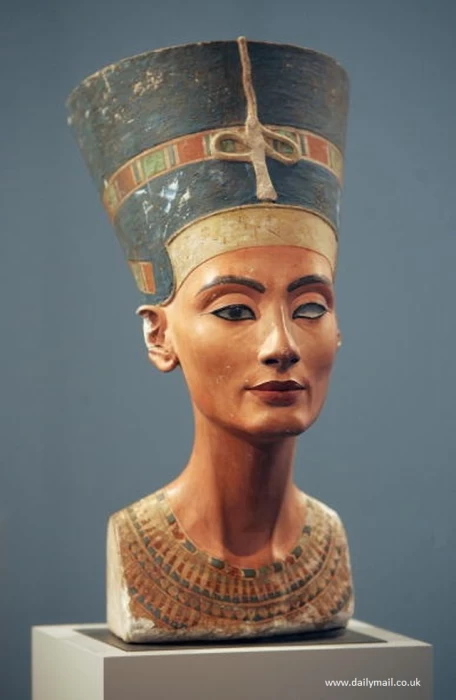
The Queen Hatshepsut
Who is this strong woman?
She is Hatshepsut, the greatest woman of her time, the daughter of King Thutmose I, and her mother, Queen Ahmose. She married her brother, King Thutmose II, and was called the Great Royal Wife, and upon his death, she was The guardian of the throne of his son, King Tuthmosis III, who was nine years old at the time, ruled next to him from 1479 to 1457 BC.
Hatshepsut is considered one of the most important kings of Egypt, whose era was marked by peace and prosperity, the improvement of the army's strength, the securing of the Egyptian borders, and the consolidation and development of diplomatic and commercial relations and links with the neighboring countries of Egypt.
According to Egyptian religious traditions, Hatshepsut was considered outside the religious legitimacy of the rule, as the ruling king must be a male representative of the god Horus, the lord of property, in order to grant religious legitimacy and acceptance among the people.
A testament to the throne of an official king, Tuthmosis III, began.
The era of Hatshepsut was distinguished by many architectural constructions that illustrate the extent of the prosperity of its era. The scenes and inscriptions that were represented on it provide us with a clear idea of the history and achievements of Queen Hatshepsut.
Hasan built-in Minya, and another temple for Hathor, and from the texts of these two temples, Hatshepsut tells us that she carried out many renovations and repairs in many Egyptian temples, such as these two temples, due to the damage they sustained during the rule of the Hyksos in Egypt, which indicates the interest that the rulers of Egypt continued to be proud of expelling the Hyksos even after their expulsion from Egypt.
Egypt for many decades. However, the most important monument of Hatshepsut at all is her famous funerary temple in Deir el-Bahari, which is one of the most immortal of her works with its unique design and wonderful inscriptions, and other important events that we talked about the monuments of Queen Hatshepsut, sending a peaceful mission to the cave valley in Sinai, and she opened turquoise mines in Sinai.
And sent two military campaigns to Nubia, the first at the beginning of her reign, and the second against a rebellion in Nubia in the year 20 and was under the leadership of Tuthmosis III and the third campaign to Palestine and Syria also carried out by Tuthmosis III, in which he was seized of Gaza.
Egypt lived during the reign of Queen Hatshepsut in the era of The brightest eras of Egyptian civilization over a period of 12 years and nine months, as stated in the history of Manetho, spent them ruling Egypt, surrounded by greatness and replete with glory.
The discovered antiquities have not been disclosed it yet, but she was buried in her tomb in the Valley of the Kings, from which it was then transferred to the tomb of her nurse, cemetery 60, in the Valley of the Kings.
You can enjoy the breathtaking scenery and enjoy beauty and civilization of the ancient Egyptians and watch the beauty of the temples and pharaonic statues through a trip from Luxor day tours.
Latest Articles
Admin
Seabourn Sojourn Cruise Stops in Safaga Port
The Seabourn Sojourn, the flagship vessel of Seabourn Cruise Line's ultra-luxury fleet, was built in 2008 at the T. Mariotti shipyard in Genoa, Italy. Measuring 198 metres, it can accommodate up to 450 guests in its 225 spacious all-suite staterooms.
Admin
Norwegian Sky Cruise Stops in Safaga Port
Norwegian Cruise Line operates a cruise ship called the Norwegian Sky. It was constructed in 1999 and can accommodate 2,004 passengers in addition to 878 crew members. The ship has several dining establishments, lounges and bars, a spa and fitness center, swimming pools, and a number of entertainment areas.
Admin
Explora II Cruise Stops in Safaga Port
Explora II, the second vessel in the Explora Journeys fleet, sets sail in 2024 to redefine luxury cruising. With 461 ocean-front suites, 9 culinary experiences, and 4 pools, this haven of sophistication and sustainability promises an unforgettable "Ocean State of Mind" journey to inspiring destinations.
Admin
Mein Schiff 6 Cruise Stops in Safaga Port
The Mein Schiff 6 is the latest cruise ship in the renowned TUI Cruises fleet, offering passengers a luxurious and sophisticated cruise experience. At 315 metres long, this floating resort features a range of dining options, entertainment, and recreational facilities, including a spa, fitness centre, and sports amenities.
Admin
Mein Schiff 4 Cruise Stops in Safaga Port
When the Mein Schiff 4 cruise ship docks in Safaga, Egypt, passengers are granted access to a realm of ancient wonders. Aboard this state-of-the-art vessel, guests can embark on meticulously curated shore excursions that showcase the region's most iconic landmarks, including the Giza Pyramids, the enigmatic Sphinx, and the remarkable tombs and temples of the Valley of the Kings in Luxor.
Admin
MS Europa Cruise Stops in Safaga Port
The Silver Moon, Silversea's latest flagship, is a luxury cruise ship that offers an exceptional travel experience for Venezuelans exploring Egypt. With a capacity of 596 guests and an impressive 40,700 gross tonnes, the Silver Moon maintains the small-ship intimacy and spacious all-suite accommodations that are the hallmarks of the Silversea brand.






